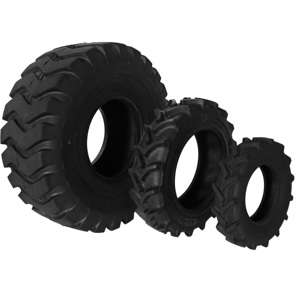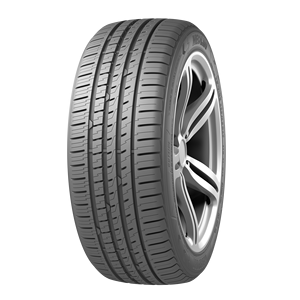(25520 products available)












































































 Ready to Ship
Ready to Ship























































































































Large tires come in different types and sizes suitable for various purposes and terrains. Here are some standard large tire types:
1. Off-Road Tires
These are robust and durable tires designed for off-road conditions. Typically, they feature large, deep treads for maximum grip on loose ground, like sand, mud, and rocks. They are commonly used in large 4WD vehicles, such as trucks and SUVs, for off-road driving or in rural conditions. There are three main types of off-road tires:
2. Truck Tires
These are large, durable tires specifically designed for trucks. They are robust and can carry heavy loads. Truck tires have varied tread patterns designed for different road conditions, such as highways, off-road, or all-terrain. They also have larger sidewalls, providing more cushioning and stability for uneven roads.
3. Agricultural Tires
These are large rubber tires designed for farm equipment, such as tractors and combine harvesters. They are typically large and have deep treads, which can provide excellent traction in agricultural fields and minimize soil compaction, thereby preserving soil health and productivity. Agricultural tires also have large sidewalls that allow for good ground clearance over crops and obstacles.
4. Construction Tires
Large construction tires are heavy-duty tires designed for construction equipment, such as excavators, loaders, and dumper trucks. They are robust and can withstand the heavy loads and harsh conditions typically encountered on construction sites. Construction tires often feature aggressive tread patterns that provide excellent traction on various surfaces, such as gravel, mud, and asphalt.
When purchasing a large off-road tire, the specifications should be understood, and the following are reasons why it is important to know large tire specifications.
Size
Tire size affects the vehicle's performance. Larger tires improve off-road capability and increase the vehicle's height, which makes it hard to steer and brake. This can affect the large truck tires' fuel efficiency. Understanding the large tire specification helps one know how to adjust the vehicle's performance.
Tread pattern
The type of driving mostly done determines the large tire's specification tread pattern one should choose. A detailed tread pattern is ideal for off-road driving, while a smoother tire offers better performance on the road. Knowing the specification helps select the appropriate tire for the driving condition.
Load capacity
Load capacity is critical when selecting large tires for lifted trucks. The lifted truck's weight and the large tire's specification should be known to prevent tire damage. Understanding load capacity also helps select the appropriate tire for specific applications, such as towing or hauling.
Speed rating
Large tire specification speed rating is important for high-performance vehicles. The speed rating ensures the tire remains stable at high speeds. Knowing the tire specification is critical for large vehicle parts and accessory suppliers to select the appropriate tire for specific applications.
Construction type
Large tire construction type affects its performance and durability. Understanding tire construction type helps select the appropriate tire for specific applications. For instance, steel-belted tires are ideal for off-road driving due to their durability.
Aspect ratio
Tire aspect ratio affects handling, ride comfort, and fuel efficiency. A low aspect ratio means a larger tire and wheel, which results in better handling but a rough ride. A high aspect ratio results in a comfortable ride but affects handling. Understanding aspect ratio helps select a tire that meets specific needs.
Large tires for trucks require proper care and maintenance to ensure they last longer and offer the best service possible. Below is how to maintain large tires:
Choosing the correct size of tires for a vehicle is an important decision that has to be made. This decision can be influenced by the driving needs of the user, the type of terrain they intend to cover, and the weather conditions they are bound to face. Here is a detailed breakdown of the factors that need to be considered when selecting large truck tires:
Load capacity:
The load capacity of a tire is its ability to support weight. When selecting tires, ensure that the load capacity corresponds with the needs of the vehicle. This is important, especially in trucks that carry cargo, as it ensures driving stability and safety.
Aspect ratio:
The aspect ratio is the relationship between a tire's width and its height. When the aspect ratio is low, the handling of the vehicle improves, and the responsiveness increases. Large off-road tires with a large aspect ratio provide a comfortable driving experience on rough terrain due to their increased absorption ability.
Tread design:
The intended use of the vehicle determines the tread design to choose. A symmetrical tread design offers stability on highways, while an asymmetrical design improves grip on wet roads. Aggressive treads are ideal for off-road driving because they provide better traction in mud and loose gravel.
Weather conditions:
Consider the weather conditions that are mostly experienced in the area before selecting a tire. All-terrain tires are a good choice for areas with different weather conditions. These tires offer large truck tires for sale that suit on-road and off-road driving. In regions prone to heavy snowfall, winter tires are needed to provide a firm grip on icy roads.
Wheel size and compatibility:
The new tire's size must be compatible with the vehicle's wheels. This is important because it ensures a proper fit, which improves performance and reduces uneven wear. Consult the vehicle's manual or an expert to determine the correct tire size.
Driving needs:
Consider the driving habits and needs. Do most of the trips happen on highways, or is there frequent off-road driving? For high-speed performance on highways, ultra-high-performance tires are needed, while durable all-terrain tires are ideal for off-road adventures.
Brand and quality:
For large 4x4 tires, quality and brand matter. Trustworthy brands provide reliable products and a quality guarantee. Read reviews and do research to find reputable brands known for their quality and customer service.
Budget:
Set a budget before selecting new tires. Large tires for trucks are more expensive than standard tires due to their size and technology. Nonetheless, it is important to consider tires a long-term investment, as high-quality tires improve performance and last longer.
Changing a large truck tire is not the same as changing a small car tire. It is not as easy as taking out the jack, removing the lug nuts, and swapping the flat for the spare. Because of the size and weight of large tires, the American National Standards Institute (ANSI) recommends that large tires only be changed using proper tire service equipment. Changing a large tire on a vehicle using a jack can be dangerous and may result in serious injury or death. If a large tire must be changed, consult the owner's manual for the proper procedure. Always follow the manufacturer's instructions.
Here are some of the steps to consider when replacing large tires:
Q1: What are the benefits of large tires?
A1: Large tires improve traction, increase ground clearance, and offer better shock absorption. They provide a larger contact patch with the road, which improves grip and stability. They also enable the vehicle to roll over obstacles, such as rocks and roots, making them ideal for off-road driving.
Q2: Do large tires affect the speed of the vehicle?
A2: Yes, large tires can impact the vehicle's speed and fuel efficiency. When a car has larger tires, it covers more ground with each rotation, which can result in the speedometer reading lower than the actual speed. The driver may need to adjust the engine's performance to account for the increased tire size, which could affect fuel efficiency.
Q3: Can any vehicle fit large tires?
A3: Not all cars can accommodate large tires without modifications. The size of the tires that a vehicle can support is determined by the clearance of the wheel wells, the width of the wheels, and the suspension system. Some cars may require modifications, such as lifting the suspension or adding wheel spacers, to fit larger tires.
Q4: Do large tires require more maintenance?
A4: Large tires typically require the same level of maintenance as standard-sized tires. However, because they are wider, they may be more prone to lateral wear. Proper wheel alignment and regular tire rotations are essential to ensure even wear and prolong their lifespan. Additionally, large tires can increase rolling resistance, which may impact fuel efficiency.
The web search volume for the keyword "large tires" has shown a consistent average monthly web search volume of 590, with minimal fluctuations over the past year. Notably, there has been no significant change in the three-month and one-year web search volume trends, maintaining stability with periodic peaks.
Analyzing the detailed trend for "large tires," the web search volume remained steady at 590 web searches per month from December 2023 to February 2024, except for a noticeable increase to 720 web searches in February and August 2024. The web search volume then reverted back to the average of 590 in subsequent months, with the exception of October 2024, where it dipped to 480 web searches. This pattern suggests a consistent interest in large tires, with periodic spikes possibly influenced by seasonal trends or specific market events.
Throughout the year, the web search volume for "large tires" has demonstrated remarkable steadiness, with only a few deviations. The peaks in February and August could be attributed to seasonal buying habits, where consumers might prepare for specific weather conditions or engage in vehicle upgrades during these months. The dip in October might indicate a temporary decline in consumer interest or market saturation. This data provides valuable insights into consumer behavior and market dynamics within the vehicle parts and accessories category.